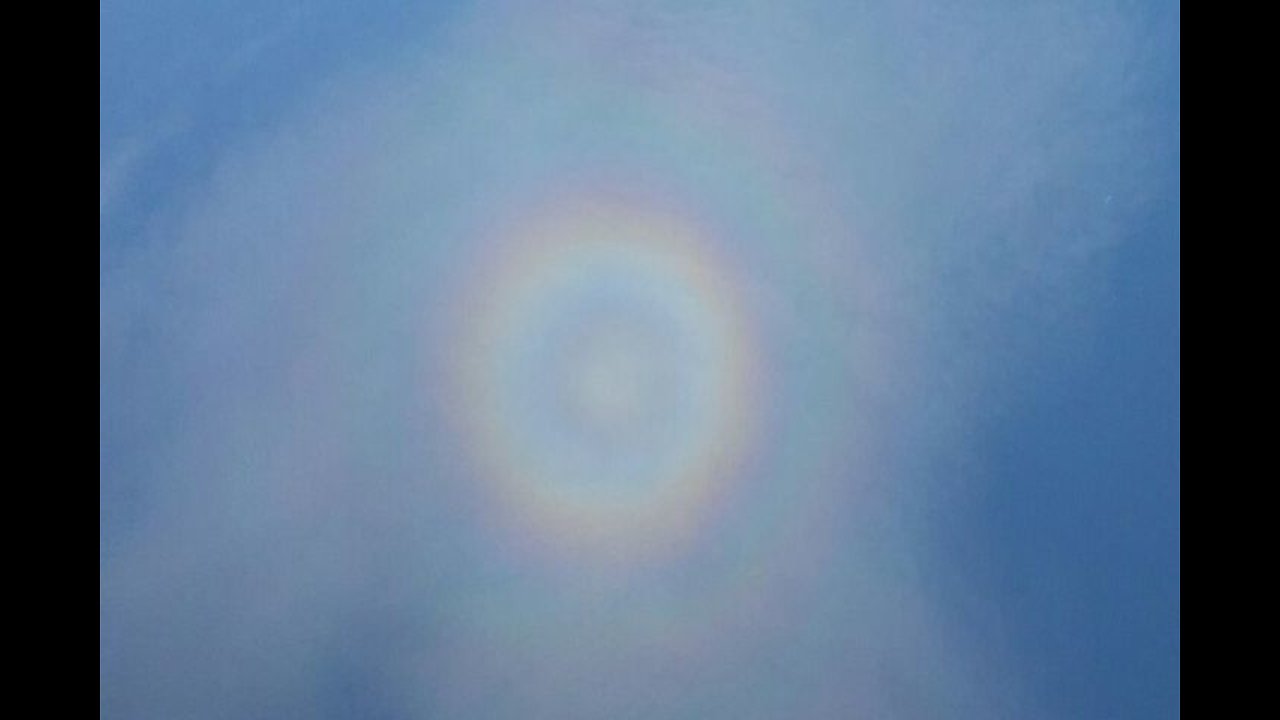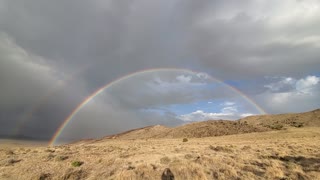Premium Only Content

Плазменная сфера Радуга 10 ноября 2018 Глория Gloria Full Rainbow
Глория или ореол радуги, полная круглая радуга. Заснята с борта самолёта в небе над Россией, 10 ноября 2018 днём. Окна покрыты изморозью.
Гло́рия (лат. gloria — украшение; ореол) — оптическое явление в облаках.
Наблюдается на облаках, расположенных прямо напротив источника света. Наблюдатель должен находиться на горе или на самолёте, а источник света (Солнце или Луна) — за его спиной. Так же можно наблюдать на видео или фотографиях снятых с дистанционно пилотируемых летательных аппаратов.
Представляет собой цветные кольца света на облаке вокруг тени наблюдателя. Внутри находится голубоватое кольцо, снаружи — красноватое, далее кольца могут повторяться с меньшей интенсивностью. Угловой размер намного меньше, чем у радуги — 5…20°, в зависимости от размера капель в облаке.
Глория объясняется дифракцией света, ранее уже отражённого в капельках облака так, что он возвращается от облака в том же направлении, по которому падал, то есть к наблюдателю. Называют глорию ещё как Полная или Круглая Радуга.
Плазменная сфера
В Китае глорию называют «светом Будды» (佛光). Первые письменные свидетельства о наблюдении явления с горы Эмэйшань датируются 63 г. н. э. Цветное гало всегда окружает тень наблюдателя, что часто толковалось как степень его просветления (приближённости к Будде и другим божествам).
Full Rainbow
photographer videographer Rassim on November 10, 2018
In an airplane, somewhere of Russia, Ural region.
A glory is an optical phenomenon, resembling an iconic saint's halo around the shadow of the observer's head, caused by sunlight or (more rarely) moonlight interacting with the tiny water droplets that compose mist or clouds. The glory consists of one or more concentric, successively dimmer rings, each of which is red on the outside and bluish towards the centre. Due to its appearance, the phenomenon is sometimes mistaken for a circular rainbow, but the latter has a much larger diameter and is caused by different physical processes.
Glories arise due to wave interference of light internally refracted within small droplets.
Depending on circumstances (such as the uniformity of droplet size in the clouds), one or more of the glory's rings can be visible. The angular size of the inner and brightest ring is much smaller than that of a rainbow, about 5° to 20°, depending on the size of the droplets. In the right conditions, a glory and a rainbow can occur simultaneously.
Like a rainbow, a glory is centered on the antisolar (or, in case of the Moon, antilunar) point, which coincides with the shadow of the observer's head. Since this point is by definition diametrically opposed to the Sun's (or Moon's) position in the sky, it always lies below the observer's horizon when the Sun (Moon) is up. In order to see a glory, therefore, the clouds or fog causing it must be located below the observer, in a straight line with the Sun/Moon and the observer's eye. Hence, the glory is commonly observed from a high viewpoint such as a mountain, tall building or from an aircraft. In the latter case, if the plane is flying sufficiently low for its shadow to be visible on the clouds, the glory always surrounds it. This is sometimes called The Glory of the Pilot.
-
 3:01
3:01
Weathernature
4 years agoCalming surf of the sea and seagulls at sunset
37 -
 0:26
0:26
NannaontheMountain
3 years ago $0.01 earnedColorado full double rainbow.
401 -
 0:20
0:20
RusselldScott
3 years ago $0.03 earnedFull rainbow over the canal.
226 -
 2:01
2:01
Chaos520
3 years agoFantastic full double rainbow 🌈
39 -
 0:23
0:23
ChuckE
4 years ago $0.02 earnedFull rainbow
116 -
 1:11
1:11
ViralHog
3 years ago $0.33 earnedStunning Double Rainbow Goes Full Circle
1.01K6 -
 0:08
0:08
ScottRuggels
3 years agoFull Rainbow in Santa Rosa
173 -
 0:19
0:19
Incorel
3 years ago $0.02 earnedRare Seen full sight double Rainbow
6155 -
 0:10
0:10
RusselldScott
3 years ago $0.01 earnedLight rainbow
993 -
 0:02
0:02
NannaontheMountain
3 years ago $0.08 earnedBeautiful Double Rainbow
72